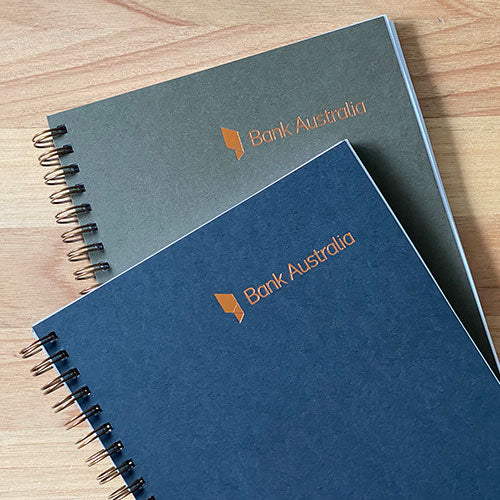5 reasons why writing ideas down helps make them happen.
With so many distractions in life and the fleeting fast pace of social media around us, it can be difficult on a day-to-day basis to remain productive. Often as creatives we’re working at home in a familiar space filled with many things that could steal our thoughts and energy. Anything from chores, housework, digital devices, TV and even our loved ones.
How do we push through this noise and keep on track with our goals? What about those niggling ideas you have for a project you’d love to ‘one day’ create?
Stepping away from our digital devices can be our best strategy for achieving clarity. Step away from the computer with your favourite notebook and only a pen or pencil in your hand.
Here’s 5 reasons why writing ideas down helps make them happen.
1. Turn up!
In the book The Artist’s Way, Julia Cameron extensively details her experience helping people through creative block by their consistent, daily practice of Morning Pages. Write three full A4 pages of anything that comes to mind. It doesn’t need to make sense or be an award winning piece of literature. It’s purely for downloading your brain of all the clutter to ensure that you free yourself up for the real tasks ahead and get into a creative routine.
Get all of those thoughts, however flighty or irrelevant, out of your head and onto the page.
2. Priorities
Before looking at your overflowing inbox, sit down and work out your priorities for the morning, night or day ahead. In The 4-Hour Work Week, Tim Ferris describes:
Don’t ever arrive at the office or in front of your computer without a clear list of priorities. You’ll just read unassociated email and scramble your brain for the day. Compile your to-do list for tomorrow no later than this evening.
3. Psychology
Studies show that students who hand write their notes are more likely to internalise the lecturer’s message, compared to digital notetakers who type the words verbatim as he/she speaks. The activity of writing helps your brain to process the information. The message is being internalised both visually and kinesthetically through the movement of your hand and arm.
Don’t sit idly at your computer — grab a notebook and jot down those ideas!
Source 1: http://www.scientificamerican.com/article/a-learning-secret-don-t-take-notes-with-a-laptop/
4. Handwriting stimulates emotion
Handwriting affects us on an emotional level too. Neurologists describe biochemical change called ‘memory trace’ where our brains respond to visual stimuli in the same way we respond to a familiar face. This sets off emotional connections to the word on the page.
Write out your to-do list and take satisfaction in crossing them off as you go through your tasks!
Source 2: http://www.pickthebrain.com/blog/want-to-get-things-done-write-it-down/
5. Actionable steps
Scott Belsky’s book Making Ideas Happen is an incredible resource for kickstarting new projects and bringing ideas to fruition. He believes, “An idea can only become a reality once it is broken down into organised, actionable elements.”
Start at the beginning. Jot down your initial thoughts and ideas – however trivial they may seem. Then start listing smaller tasks that are required to bring the full project to life. Each little task is a part of the bigger picture and a tiny milestone towards making things happen.

![Spearmint A6 Pocket Notebooks [BULK 8 PACK] - Notely Lined](http://notely.com.au/cdn/shop/products/spearmint-a6-pocket-notebooks-bulk-8-pack-notely-399099_1600x.jpg?v=1699275130)









